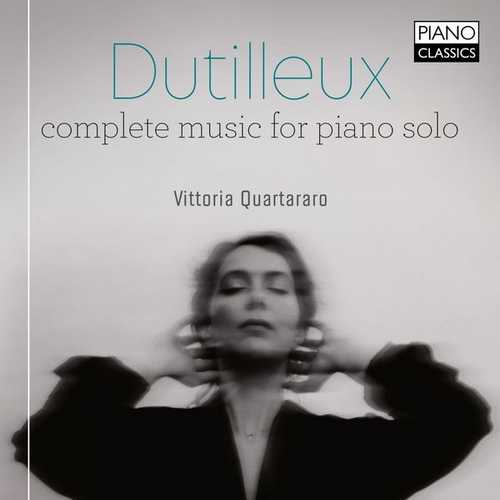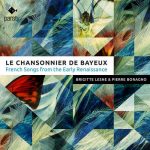

Composer: Henri Dutilleux
Performer: Vittoria Quartararo
Format: FLAC (tracks)
Label: Piano Classics
Catalogue: PCL10167
Release: 2021
Size: 774 MB
Recovery: +3%
Scan: yes
3 Préludes
01. I. D’ombre Et De Silence
02. II. Sur Un Même Accord
03. III. Le Jeu Des Contraires
Au Gré Des Ondes
04. I. Prélude en Berceuse
05. II. Claquettes
06. III. Improvisation
07. IV. Mouvement Perpétuel
08. V. Hommage À Bach
09. VI. Étude
10. Mini-Prélude en Éventail
11. Résonances
12. Petit Air À Dormir Debout
13. Blackbird
14. Bergerie
15. Tous Les Chemins Mènent… À Rome
Piano Sonata
16. I. Allegro Con Moto
17. II. Lied
18. III. Choral Et Variations
Though Dutilleux began composing at an early age and undertook the rigorous course of study at the Paris Conservatoire, culminating in the much sought-after Prix de Rome in 1938 with a cantata, he regarded his Piano Sonata of 1946-1948 as an Opus 1. This attitude was characteristic of a remarkably fastidious and self-critical composer who dedicated his life to composition – and the nurturing of young composers – and yet whose published output is influential out of all proportion to its size.
He wrote the sonata for the pianist Geneviève Joy whom he married in 1946. The musical language is as much modal as tonal, owing as much to Bartók’s methods of musical organization and the 19th-century Germanic concept of the large-scale masterpiece as contemporary developments in harmony. Everything he wrotes seems to repudiate the commonly held idea that French music is essentially frivolous and charming, but Dutilleux’s music can smile and relax, too: while working at French radio he composed a series of short pastiche pieces as air-filler, later compiling them as a suite, Au gré des ondes.
Blackbird is Dutilleux’s sole trespass on the territory of his contemporary Messiaen: knowingly brief and non-naturalistic by comparison, a portrait of the blackbird’s soul more than its song. The Debussian heritage of painting on the piano comes to the fore on the set of Three Preludes composed between 1973 and 1988, while Resonances is a study in timbre built with the composer’s individual technique of pivot notes and chords.
As Vittoria Quartararo observes in her booklet introduction, “the music of Dutilleux often seems to shift towards a visual level. While the verticality of piano chords can resonate like light does on a black canvas, one’s gaze becomes more horizontal, distant, and at times visionary, detecting the reverberation of a sound transformed in liquid crystal”. Born in Sicily in 1989, now resident in Cologne, Vittoria Quartararo is a musician of broad artistic sympathies whose artistic projects range from concert recitals across Europe to experimental meetings of music with improvisation and theatre. Vittoria Quartararo received her piano training at the Scuola di Musica di Fiesole with Valentina Pagni and Andrea Lucchesini and continued her musical studies in Germany at the Hochschule für Musik und Tanz Köln with Jacob Leuschner, Claudio Martínez-Mehner as well as David Smeyers in contemporary music performance. Other significant influences in her musical development include Ewa Kupiec, Alexander Lonquich and Pierre-Laurent Aimard. As a scholar she specialised in the music of Korngold; she performs Classical-era, Romantic and contemporary repertoire alike, working with notable luminaries in the new-music field such as the oboist/conductor Heinz Holliger and the Cologne-based Ensemble 20/21 as well as many living composers.



